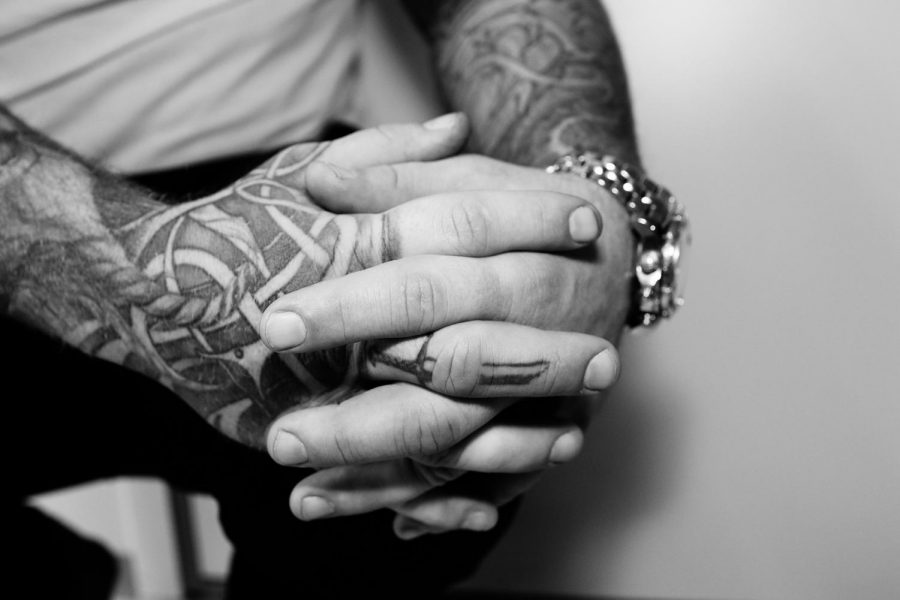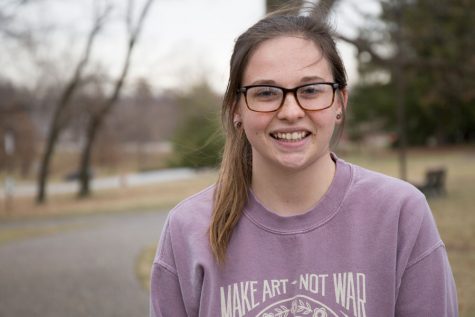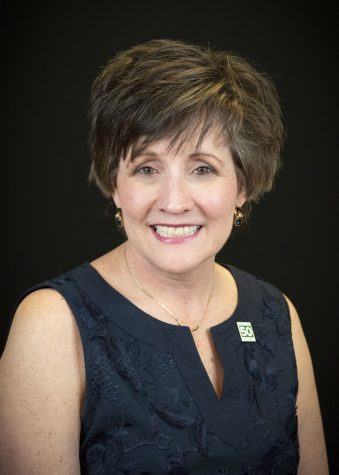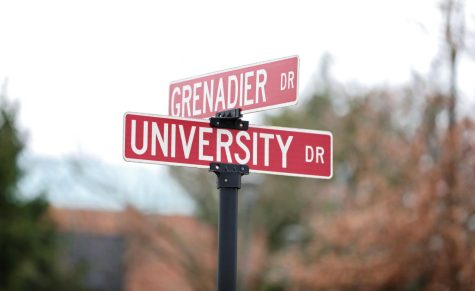Incorporating ink
The changing perception of tattoos in the workplace and how it impacts college-aged individuals during and after the hiring process
January 5, 2018
Freshman Aril Offutt’s high school teacher confessed to negatively judging her based on her tattoos, but after Offutt scored the highest grade in the class, he admitted that his perception of people with tattoos was inaccurate.
“I’m showing them that they’re wrong,” Offutt said. “I’m making it easier for the next generation.”
The environmental geology freshman says she got her first “job-stopper” tattoo at 18-years-old on her hand. She refers to “job-stoppers” as tattoos that are offensive in nature or in locations that can’t easily be covered, thus decreasing one’s chances of landing a job.
Tattoos have been relevant to various cultures and societies for centuries, but a developing trend of tattoos may be becoming more common in today’s society. According to The Harris Poll, nearly half of the millennial population and over a third of Gen Xers admit to having at least one tattoo.
Tattoos among older generations were not as prevalent as more recent age cohorts. The historical context of tattoos used to be popular among notorious motorcycle gangs, soldiers and often criminals; however, these stereotypes are no longer the case.
Although tattoos are becoming more common and less taboo, stigmas and stereotypes still appear to exist, especially in the workforce.
According to the Society for Human Resource Management, the acceptance rate of hiring visibly inked employees depends on the nature of the job and geographic area one lives in.
No Visible Tattoo Policies
Organizations with customer interaction, such as the restaurant industry, often boast a no-visible-tattoo policy and require employees to cover all tattoos while working. According to the Aspen Institute, nearly 50 percent of all adults have worked in the restaurant industry at least once in their lifetime and a portion of these adults are college students working to support themselves and pay for tuition.
“Visible tattoos continue to impact the hiring process today in most industries.”
— Jill Anderson, former Yum! Brands director of human resource operations
The inconvenience of covering tattoos is something Alex Reynolds, sociology junior, experiences all too well at her current job at McAlister’s Deli.
“They make me cover up all the visible ones,” Reynolds said. “I have to wear a short sleeve shirt, and I am now required to wear a long sleeve under my shirt at work, which is kind of frustrating.”
Outside of the restaurant industry, the U.S. Army’s tattoo policy states that U.S. Soldiers may not have more than four visible tattoos and are required to go through a tedious process involving picture documentation of each tattoo. Also, soldiers are subjected to annual check-ups to ensure the policy is followed.
Some academic programs also require visible tattoos to be concealed. Wesley Wilkinson, nursing sophomore, is required to cover his tattoos as a member of the Nursing Program at IU Southeast.
“You are representing a very prestigious program,” Wilkinson said. “And you are also representing the school as a whole, so I understand why they want us to be covered up if we have them.”
Wilkinson also works night shifts at Floyd Memorial Hospital where he isn’t required to cover his tattoos but usually wears a long sleeve undershirt because he is used to doing so.
To Cover or Not to Cover?
These strict tattoo policies allow questions to arise surrounding the argument of whether companies will inevitably take a loss as a result of turning away qualified tattooed employees or eventually change their policies.
Jill Anderson, former Yum! Brands director of human resource operations, says college students should take into consideration the size and placement of a tattoo before getting one. Also, if they cover the tattoo in the interview process, they may want to contemplate if they are willing to cover it up after if they get the job as well.
“Tattoos, depending on location, can easily be covered during work hours; however, that’s not typically something someone wants to have to do,” Anderson said.
Reynolds initially had her tattoos hidden under a long sleeve shirt during the interview process at McAlister’s Deli. After a month of working at the restaurant, the manager eventually noticed her tattoos and required her to cover them immediately.
However, other organizations do not enforce the same policies and brand themselves as an equal opportunity employer inclusive of those who choose to express themselves through body art.
On the Other Hand…
According to company dress code policies, large businesses such as Amazon and Starbucks promote individualistic expression and do not require tattoos to be covered; however, some limitations may still be present.
Although social perception may be more lenient on the idea of tattoos, some employers are still stern regarding their policies. College students may have to take this knowledge into consideration before getting inked.
However, perception is a multiple-sided exchange. Offutt prefers to not associate with companies who discriminate against tattoos and works in fields that embrace her ability to perform and not her visual appearance.
While working at the Galt House, Offutt wore skirts displaying her leg tattoos to coworkers and customers, and management eventually decided to make her cover them.
“They yelled at me and told me to wear pants, so I quit,” Offutt said.
Offutt admits she could essentially wear makeup or use other methods to cover her tattoos but would rather have a job where she doesn’t have to fit society’s subjective standards of “looking professional.”
Offutt says she believes the negative stereotypes of people with tattoos will change over time when the new generation eventually becomes the old generation. Until then, she supports herself as a personal caretaker and business owner while advocating for positive tattoo perception inside and outside the workplace.













